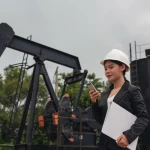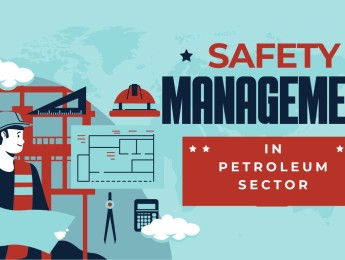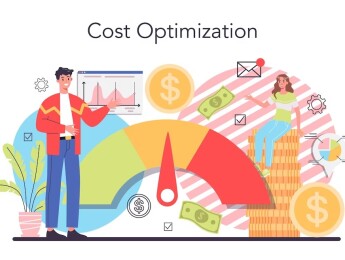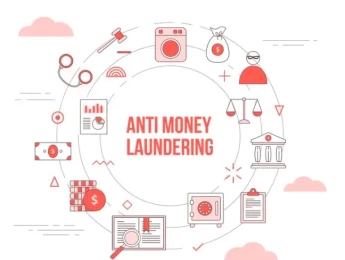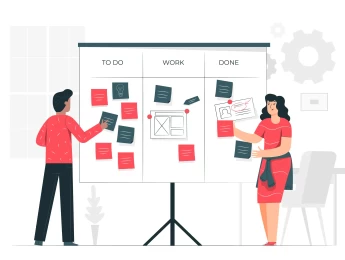Project-based risks impact an organisation's success and incur operational losses and threats. Employing a risk management plan helps you proactively identify, assess, and mitigate risks to protect your organisation in volatile and complex business environments such as the oil and gas sector.
This course provides a comprehensive look at risk identification, analysis, and control using practical steps and processes, best practices, and lessons learned from real-world situations. In addition to identifying threats and opportunities, you will learn how to use risk management and evaluation tools and develop a risk evaluation report to communicate results.
Upon completion of this course, participants will be able to:
- Understand the impact, types, and management of risk within an organisation.
- Describe the benefits and process of risk identification.
- Select appropriate tools and techniques to enhance risk management practices.
- Identify the key roles, responsibilities, and activities in managing risk.
- Effectively communicate threats and opportunities.
- Develop an appropriate risk management process.
This course is intended for:
- Professionals in Project Management, Operations, and Maintenance
- Enterprise Architects in the Oil and Gas sector
- Asset Managers
- Maintenance and Reliability Engineers
- Technical Supervisors and Managers
- Executives in the Oil and Gas sector
- Project, Asset, Maintenance, and Risk Management Consultants
This course uses a variety of adult learning styles to aid full understanding and comprehension. Participants will review case studies to highlight key areas of importance and possible areas for faults. They will be supplied with the best tools required for learning exercises to improve their skills. Participants will analyse the examples to thoroughly understand how these skills, techniques and methods apply in the workplace.
Day 5 of each course is reserved for a Q&A session, which may occur off-site. For 10-day courses, this also applies to day 10
Section 1: Organisational Risk
- Define risk.
- Compare the types of risk: business, operational, and project risks.
- Examine the contrasting nature of risk: threats and opportunities.
- Describe the risk management process.
- Outline how to incorporate risk management in a project life cycle.
- Describe how risk is managed at different levels within an organisation.
- Explore strategies to improve full organisational awareness, understanding, and support of risk and risk management.
Section 2: Identifying Risk
- Identify the main roles and responsibilities in risk management.
- Describe methods of risk identification used in oil and gas:
- Management and Administration Regulations (MAR)
- Layer of Protection Analysis (LOPA)
- Hazard Identification Study (HAZID)
- Hazard and Operability (HAZOP)
- Review best practices for identifying risk in the oil and gas sector.
- Describe Bow Tie risk analysis.
- Discuss tools and techniques for project-specific identification of risks, including alternative strategies and sabotage teams.
- Examine how a Risk Breakdown Structure (RBS) can be used to structure and guide a risk management process.
Section 3: Analysing Risk
- Identify the traits of High-Reliability Organisations (HROs).
- Outline recommended risk analysis practices in the oil and gas sector.
- Describe the benefits of a planned and dedicated process for managing risk.
- Explain the process of risk identification.
- Describe the process and benefits of qualitative and semi-qualitative risk analysis.
- Examine risk analysis tools and techniques, including:
- Planning using a risk matrix.
- Determining asset reliability and risk management with the Decision Making Grid (DMG).
- Understanding risk exposure using Quantitative Risk Analysis (QRA)
- Estimating reliability with Fault Tree Analysis (FTA) and Reliability Block Diagrams (RBDs).
- Assessing outcomes using sensitivity analysis.
- Quantifying and comparing risks with Expected Monetary Value Analysis (EMV).
- Modelling risk probabilities using the Monte Carlo simulation.
- Proactively preparing for future risks using risk registers.
- Compare organisational impacts of risk to safety and environmental impacts.
- Discuss the human side of risk.
- Review the impacts of external factors on risk analysis, including regulator activities and disastrous incidents involving the oil and gas sector.
Section 4: Understanding And Managing Risk
- Outline the main aspects of risk response planning.
- Identify how to prioritise risks.
- Review risk response strategies.
- Describe how to develop a risk management plan.
- Discuss how to calculate a risk management budget.
- Define approval and endorsement requirements for the plan.
- Outline the process of plan implementation and monitoring.
- List best practices for implementing response plans.
- Examine the use of variance and trend analysis in monitoring and controlling risk.
- Assess opportunities and determine the risks of executing a project.
- Describe the evaluation process.
- Examine Earned Value Management (EVM) as a tool to measure project performance, progress, and achievement.
Section 5: Reporting and Communicating Risks
- Outline the components of a risk evaluation report.
- Identify the characteristics of good and bad reports.
- Discuss escalating risks.
- Review the process and impact of reserve analysis.
- Develop a process to identify and incorporate assessments for future reports.
- Describe methods of embedding a risk management process.
- Use oil and gas sector case studies to examine risk management applications and results.
Upon successful completion of this training course, delegates will be awarded a Holistique Training Certificate of Completion. For those who attend and complete the online training course, a Holistique Training e-Certificate will be provided.
Holistique Training Certificates are accredited by the British Assessment Council (BAC) and The CPD Certification Service (CPD), and are certified under ISO 9001, ISO 21001, and ISO 29993 standards.
CPD credits for this course are granted by our Certificates and will be reflected on the Holistique Training Certificate of Completion. In accordance with the standards of The CPD Certification Service, one CPD credit is awarded per hour of course attendance. A maximum of 50 CPD credits can be claimed for any single course we currently offer.
- Course Code IND01-105
- Course Format Classroom, Online,
- Duration 5 days


